one of the topic which is not known in wide public is the question of the scientific definition ofsomething what is very virtual – thermal comfort. And yet, we have it!
This was actually my first bigger job. When I was finishig the my master degree I needed to chose a topic for final thesis. The story was a bit complicated but at the end could be better. I joined a bigger research project on a hybrid ventilation systems where a study needed to be done to evaluate how the individual ventilation and heating devices affects the thermal comfort in some typical appartements.
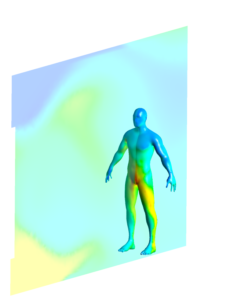
The hybrid ventilation means combination of classical devices which are powered by electricity together with some naturaly driven phenomenas such as buyoancy, stack effect, heat storage (thermal capacity of the constructions) etc. Disadvatange of those natural driven is, that they just don’t follow exact orders of the remote and we need just to live with them as they are. So here was a nice opportunity to employ the CFD (and cheap student force – myself) to make it. I spend all the holidays preparing different models and variants and then all the winter semester by runnig a huge number of cases. Recalling old times with slow computers, low RAM so one needed to be careful about the mesh optimisation to be able to have the results in a reasonable time….what a history!
So as many of my friends are surprised that there is some numercial expression for thermal feelings I decided to put it here to make a small education of the wider public.
So Let’s show, briefly, three basic indexes for comfort evaluation:
PMV (Predicted Mean Vote):
On the first look this is a very easy index which has a numerical interval between -3 up to +3 where the 0 is the comfort falue, -3 represents the extremely cold feeling and +3 represents realy hot feeling. When I say it is easy, I mean the final interpretation and understanding but not the equation itself. For those who are really curious I’ve put the complete math on the separated page here. You can find there also a web calculator there, where you can easily check how it is with the thermal comfort in your office right now.
There are some really curious variables in the equation such as:
„MET“ – level of metabolism power output per m2 of persons skin based on physical activity. Reading a book equals 1 MET (and equals to 60 W/m2) while cleaning your house rise the power output up to 3 METs and jogging goes for 8 METs. Average area of the persons skin is about 1.8 m2.
„CLO“ – counts with clothing insulation level. Assuming that standard winter dress code is about 1 clo, while the summer one is around 0.5
So the final personal feeling is a result of body heat production, clothing and various flow and temperature surrounding conditions. The result could be as weird as is presented on following CFD simulation. This is really not what one would like to experience.
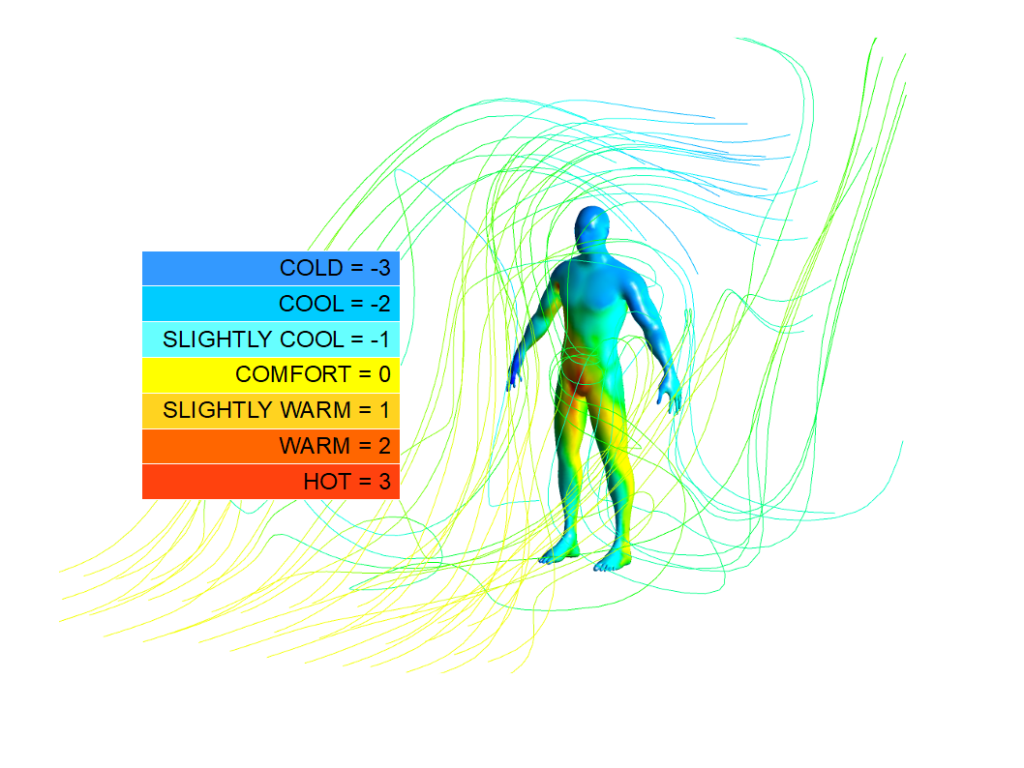
PPD (Predicted Percentage of Dissatisfied):
The mathematics here is less tough, it uses PMV as a variable and looks as follows
PPD=1−0.95×exp(−0.03353×PMV4−0.2179×PMV2)
No doubt, the perception of heat/cold is very individual and it is, of course, reflected also in those indexes we are talking about. When you look on the PPD interpretation you can see that even in „ideal“ conditions (PMV=0) there is still some level of discontent. For PMV=0-0.5 it is 5-10 percent, for PMV 0.5-1.5 it is up to 45 percent.
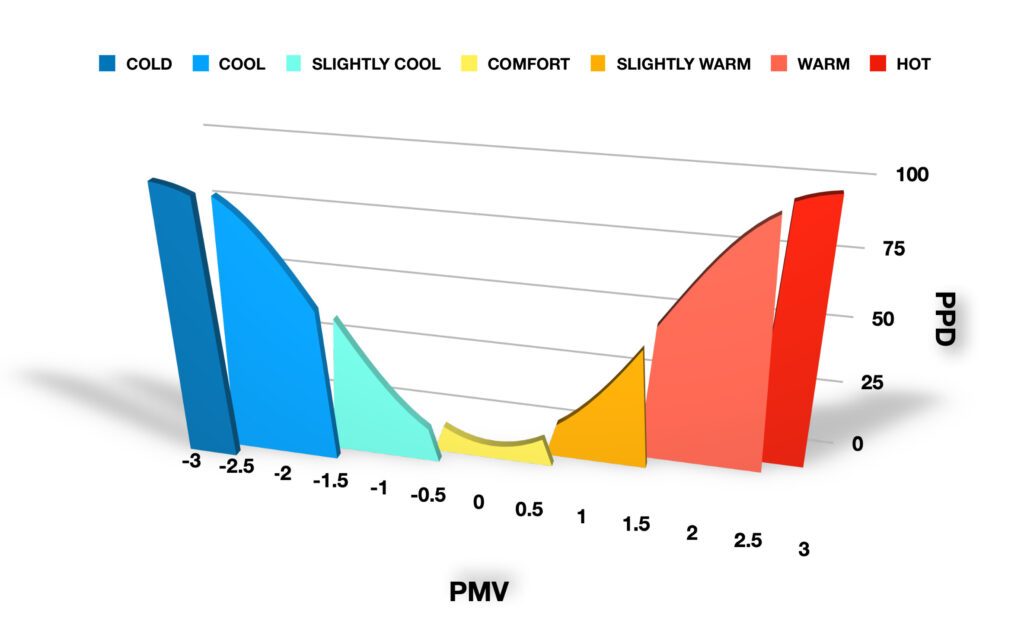
DR – DRAFT RISK
Draft Risk (%)=(34−Tx)×(Vx−0.05)0.62×(0.37×Vx×Tu+3.14) (% of dissatisfied)
- Tx – air Temperature
- Vx– air velocity
- Tu – turbulence itensity
This index seems to be quite straightorward, it uses standard physical variables and gives a simple assesment how would people feel under certain flow & temperature conditions – in other words – how yould they feel a draft. This is simething what also could be well assessed by the CFD simulation and could be used as a part of ventilation design process.
A quick simulation here shows how the window ventilation affects feeling of the draft. You can notice, for example, green color – 30% of dissatisfied is all around the dining table.
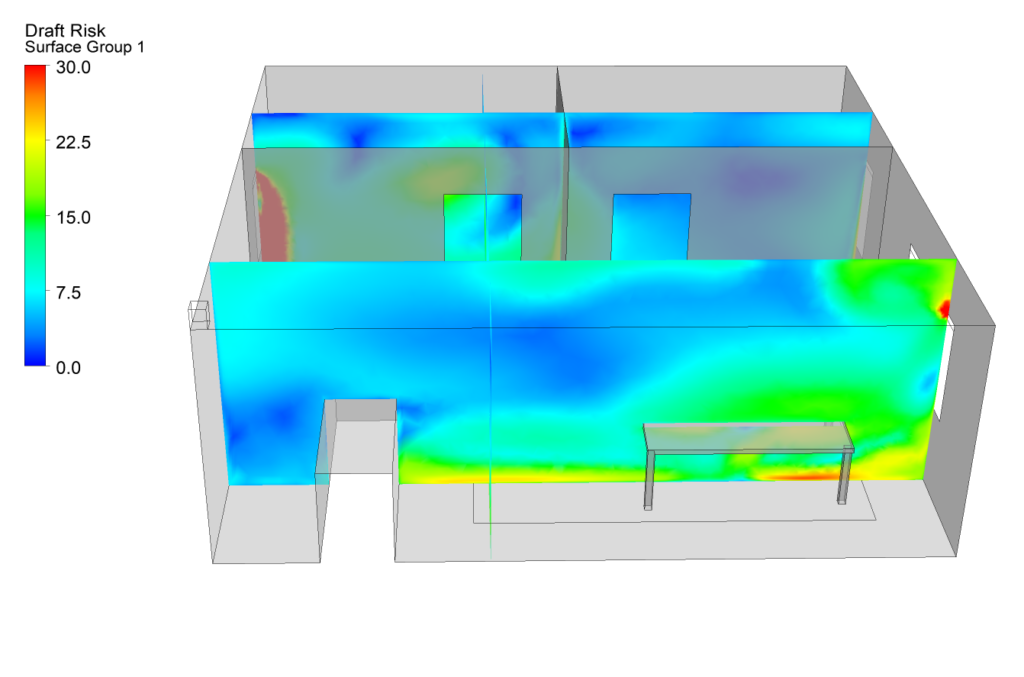 |
 |
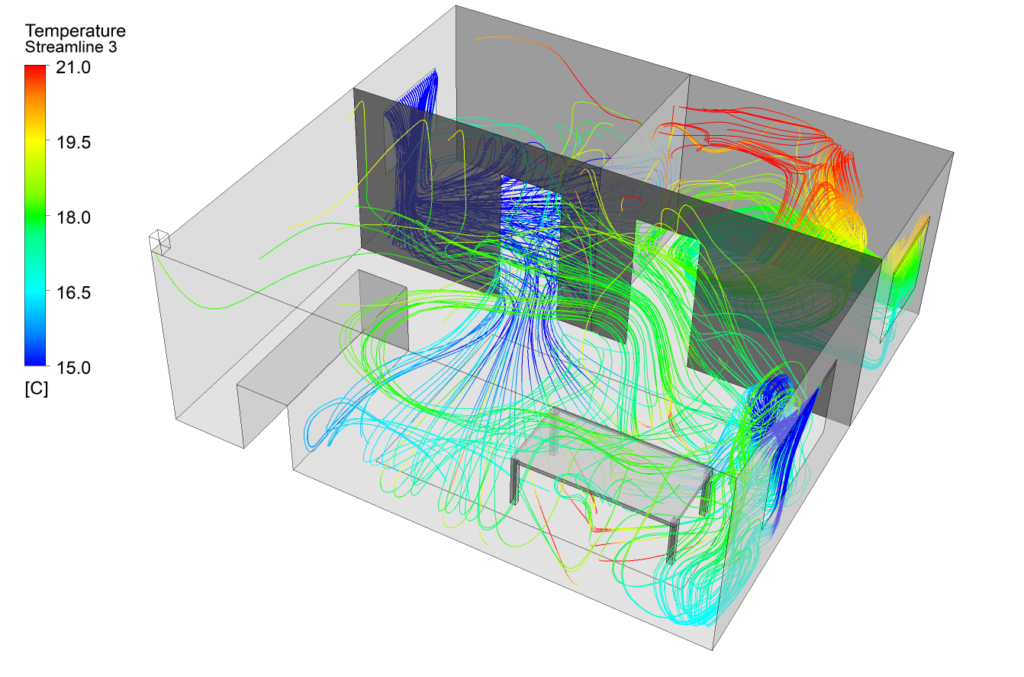 |
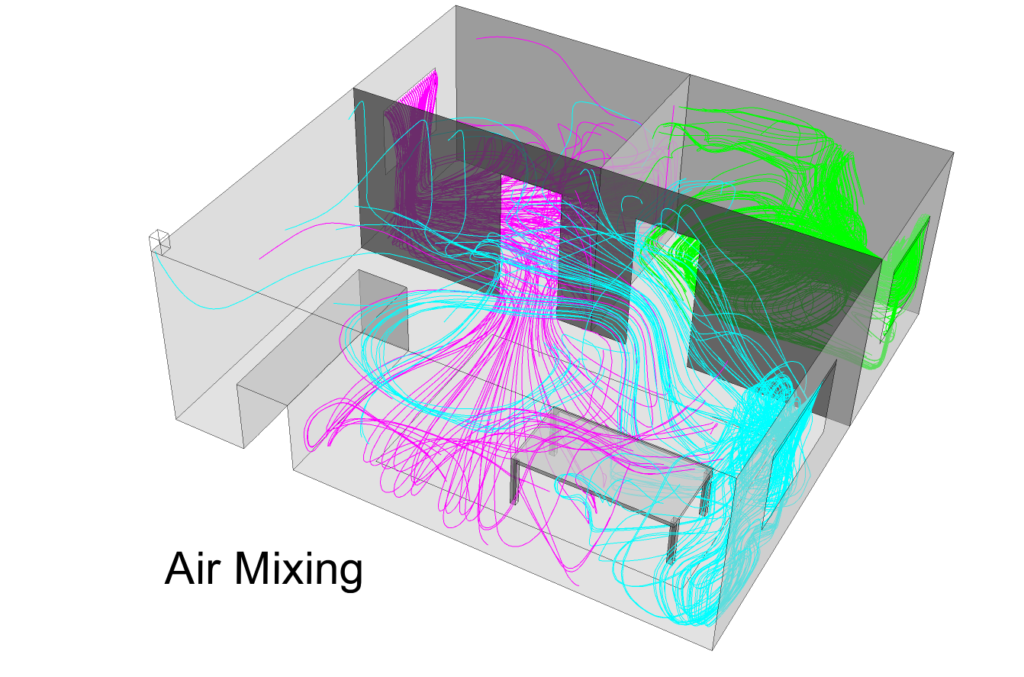 (otevře se v novém okně) (otevře se v novém okně) |
1 komentář
WordPress komentátor · 28. 8. 2018 v 20:24
Zdravím, tohle je komentář.
Chcete-li začít se schvalováním, úpravami a mazáním komentářů, pak si prohlédněte sekci Komentáře na nástěnce.
Profilové obrázky komentujících vám přináší služba Gravatar.